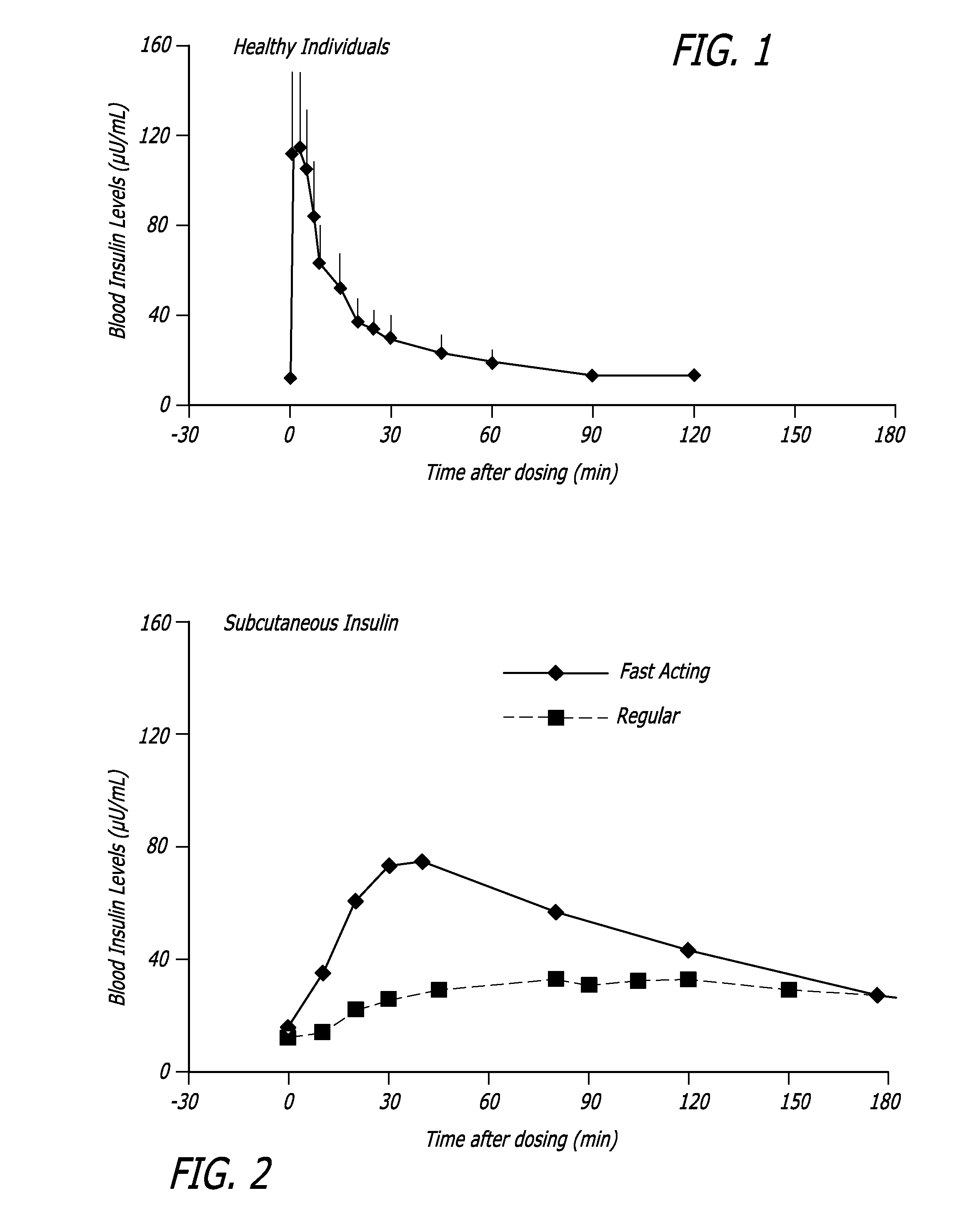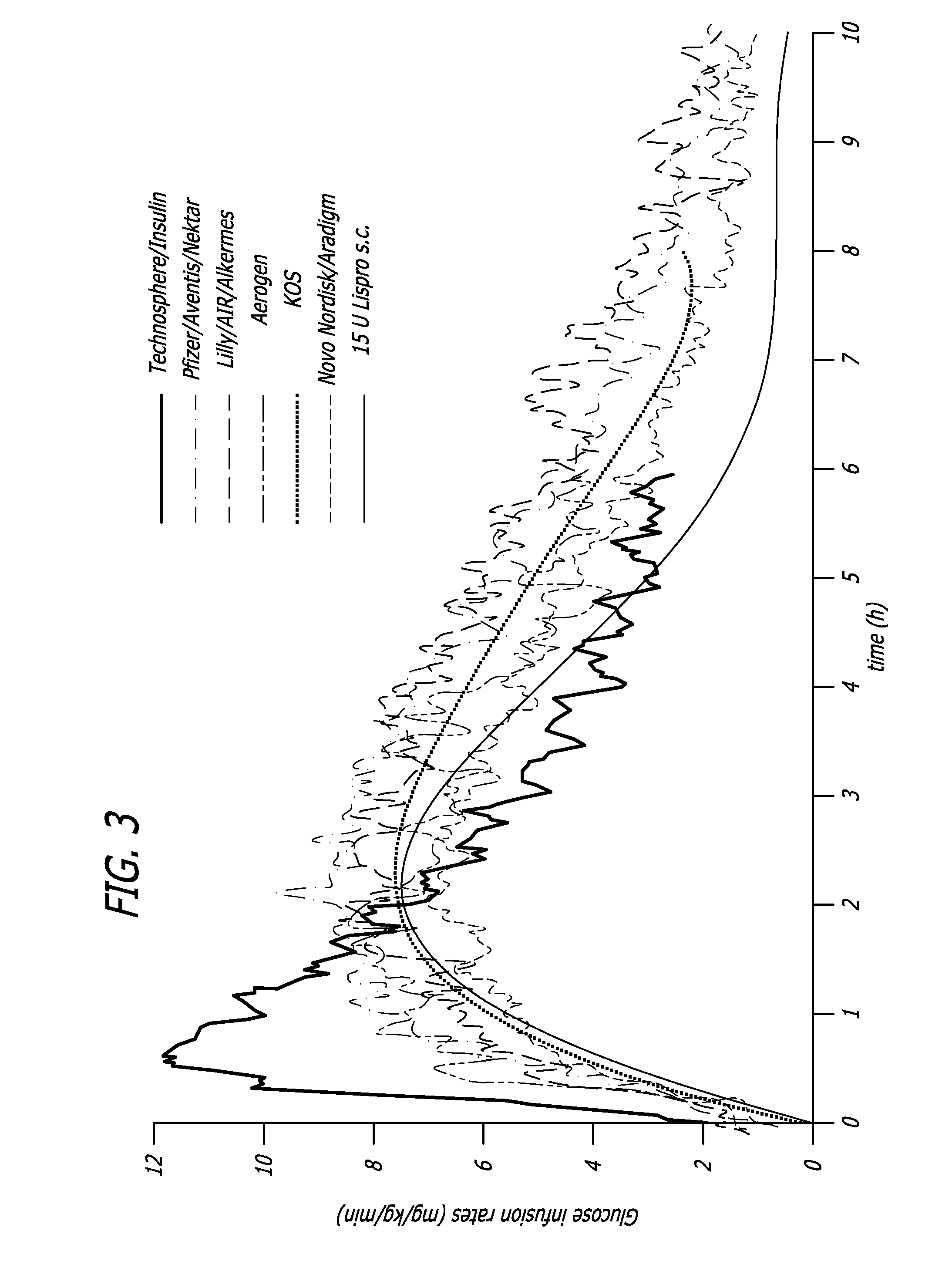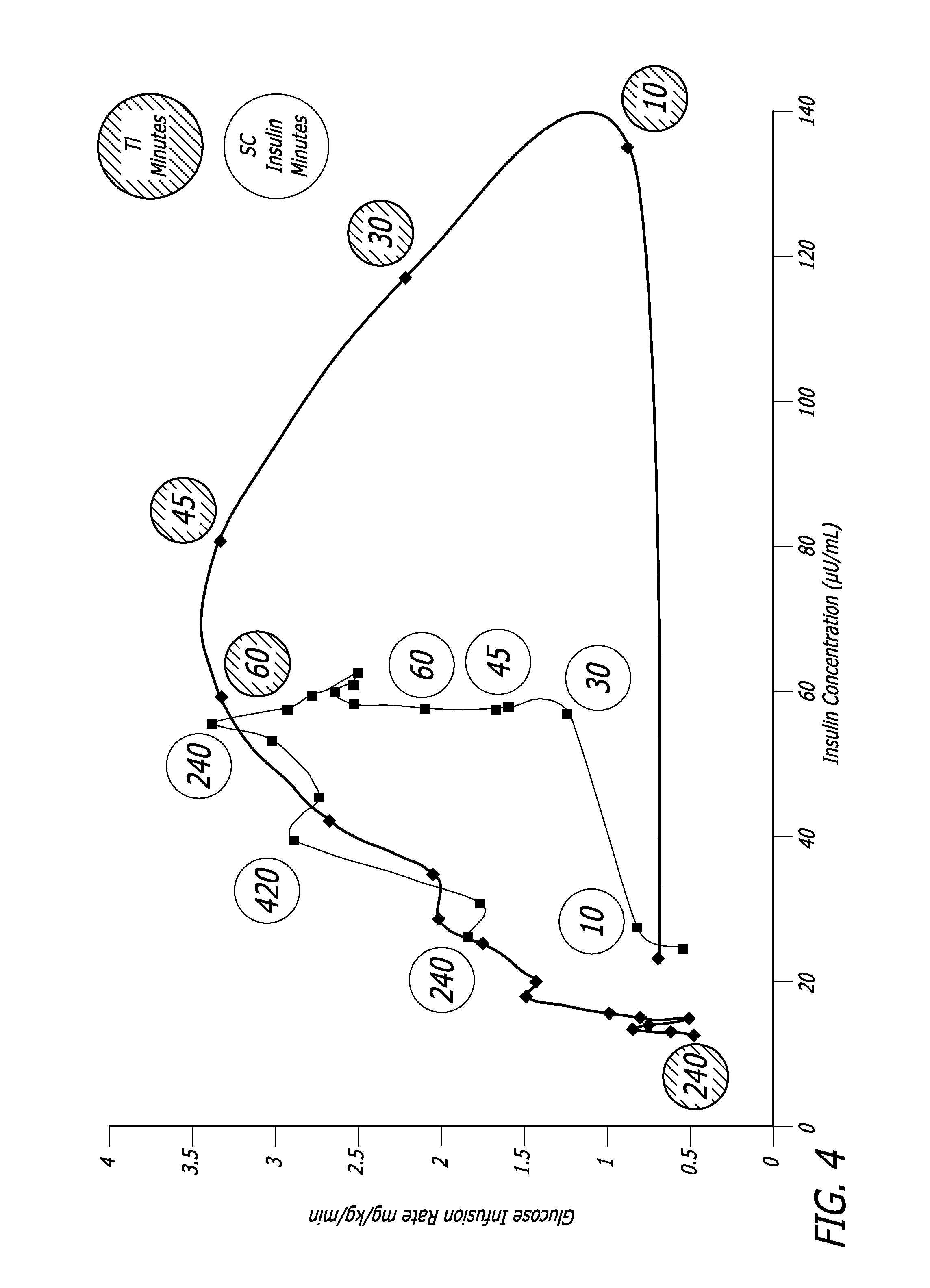Superior control of blood glucose in diabetes treatment
a diabetes treatment and blood glucose technology, applied in the field of diabetes treatment and improving the control of blood glucose, can solve the problems of impaired first-phase insulin response, sluggish response, and sluggish response, and achieve the reduction of postprandial glucose excursions, reducing and reducing the frequency of episodes of clinically relevant late postprandial hypoglycemia.
- Summary
- Abstract
- Description
- Claims
- Application Information
AI Technical Summary
Benefits of technology
Problems solved by technology
Method used
Image
Examples
example 1
Insulin Concentration at Different Dose Levels Indicates Linear Absorption
[0119] Various dosages of Technosphere® / Insulin (TI, MannKind Corporation) were administered to human subjects and insulin concentration in the blood was measured (FIG. 7A). Insulin absorption, as AUC, was linear with dosage at least up to 100 U TI (FIG. 7B).
example 2
Mimicry of the Early Phase Insulin Response in Humans with Rapidly Bioavailable Inhaled Insulin Accelerates Post Prandial Glucose Disposal Compared to Insulin with Slower Bioavailability
[0120] The relationship between time, insulin concentration and glucose elimination rate in a group of 12 subjects with type 2 diabetes, during an isoglycemic clamp was studied. Each subject received 24 IU subcutaneous insulin (Actrapid®, Novo Nordisk) or 48 U Technosphere® / Insulin (TI) on separate study days in a cross-over design.
[0121] The glucose elimination rate (GIR) was determined by the amount of glucose infusion required to maintain stable blood glucose of 120 mg / dL during the 540 min study period (FIG. 4). Forty-eight units TI provided a mean maximum concentration of insulin (Cmax) of 114.8±44.1 (mean±SD) mIU / L and had a median time to maximum concentration (Tmax) of 15 min, whereas 24 IU subcutaneous insulin (SC) had a Cmax of 63±10.1 mIU / L with a Tmax of 150 min. Technosphere® / Insulin r...
example 3
A Fast Insulin Spike does not Increase Risk of Hypoglycemia
[0126] It might be feared that the large concentrations of insulin, especially combined with their potentiation effect, would drive glucose elimination rates so high that they would pose a danger of inducing hypoglycemia. However this is not the case. Healthy human subjects under a euglycemic clamp were given intravenous, subcutaneous, or pulmonary insulin and the GIR was plotted against blood insulin concentration starting 20 minutes after administration. In normal subjects GIR hysteresis in response to insulin is much less pronounced than that for type 2 diabetics as disclosed in Example 1 above. Thus for normal subjects, 20 minutes after insulin administration and onward the relation between GIR and insulin concentration approximates a true mathematical function. It was observed that while at lower insulin concentrations the function appeared linear, consideration of higher concentrations showed that the relationship was...
PUM
| Property | Measurement | Unit |
|---|---|---|
| concentration | aaaaa | aaaaa |
| concentration | aaaaa | aaaaa |
| concentration | aaaaa | aaaaa |
Abstract
Description
Claims
Application Information
 Login to View More
Login to View More - R&D
- Intellectual Property
- Life Sciences
- Materials
- Tech Scout
- Unparalleled Data Quality
- Higher Quality Content
- 60% Fewer Hallucinations
Browse by: Latest US Patents, China's latest patents, Technical Efficacy Thesaurus, Application Domain, Technology Topic, Popular Technical Reports.
© 2025 PatSnap. All rights reserved.Legal|Privacy policy|Modern Slavery Act Transparency Statement|Sitemap|About US| Contact US: help@patsnap.com



